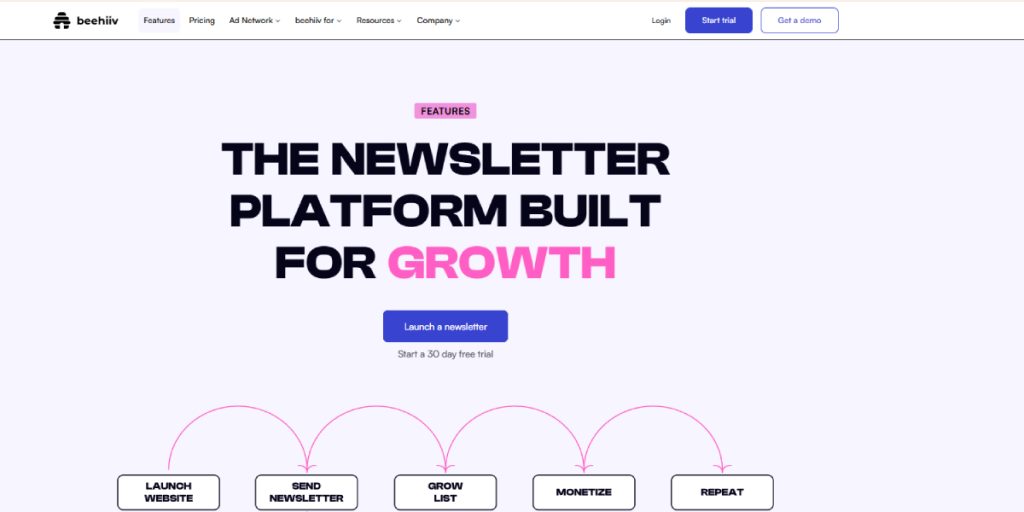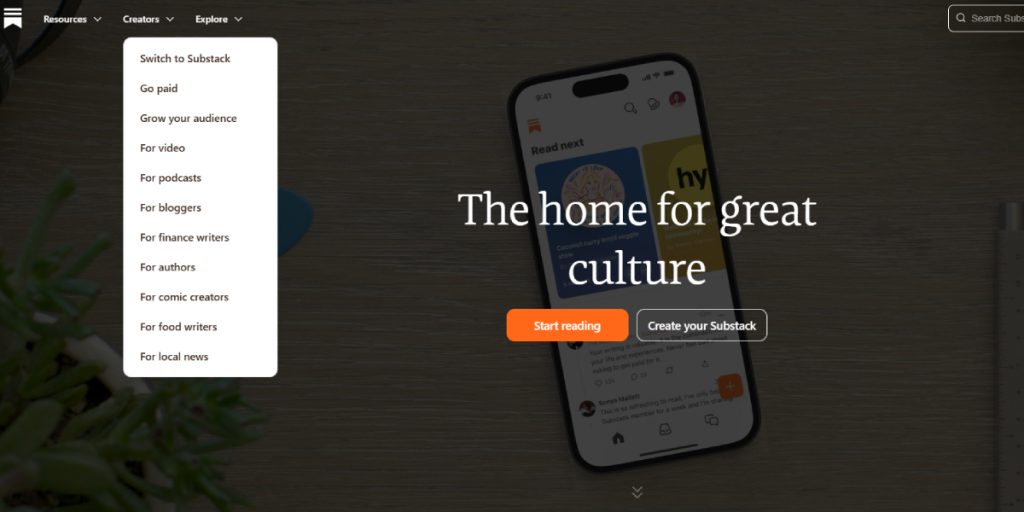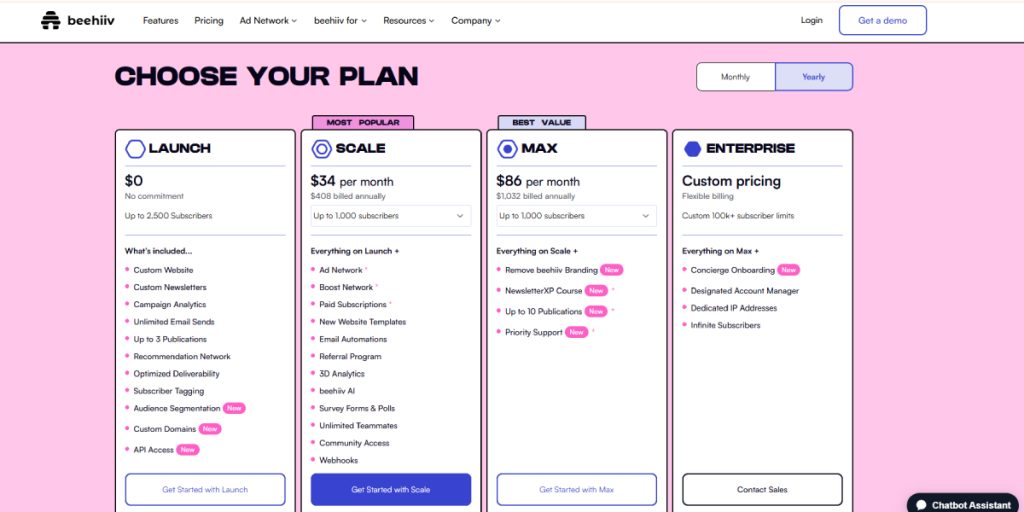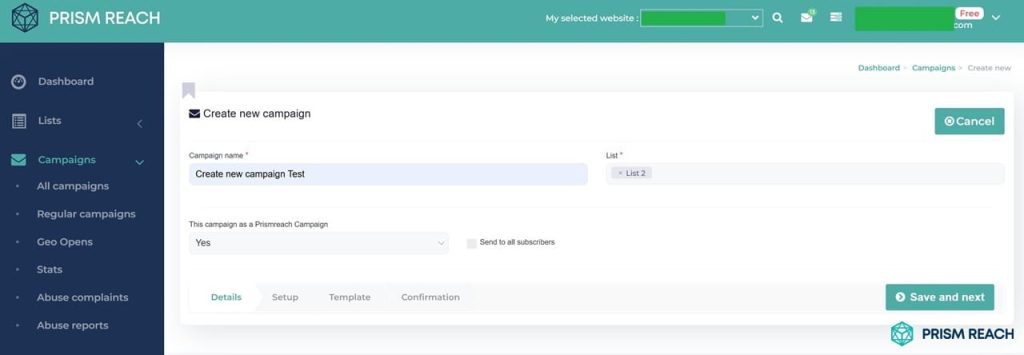Email marketing and content creation are pivotal in building and maintaining a loyal audience. Selecting the right platform can significantly impact your ability to engage with readers, monetize your content, and grow your brand. Beehiiv and Substack are two leading platforms that cater to different needs and preferences of content creators. While Beehiiv is renowned for its advanced customization options and growth tools, Substack stands out with its user-friendly interface and built-in monetization features.
Beyond their standard features, both platforms harbor “hidden gems”—strategies and functionalities that are not widely recognized but can significantly enhance your newsletter creation and audience engagement efforts. By leveraging these hidden gems, you can gain a competitive edge, ensuring your content stands out in a crowded digital landscape. Furthermore, integrating Prism Reach, an AI-powered SaaS solution, can provide advanced personalization and automation capabilities, complementing the strengths of both Beehiiv and Substack.
Key Facts
Understanding the fundamental differences between Beehiiv and Substack is essential before diving into advanced strategies. Here’s a snapshot comparison:
- Target Audience: Beehiiv is ideal for creators seeking advanced customization and growth tools, making it suitable for both new and established newsletter publishers. Substack is perfect for writers and journalists looking for a straightforward platform to monetize newsletters with minimal technical overhead.
- Features: Beehiiv offers a feature-rich environment with advanced analytics, A/B testing, and dynamic content capabilities. Substack provides a user-friendly interface with built-in monetization through paid subscriptions and community engagement features.
- Pricing: Beehiiv charges a fixed monthly fee, allowing creators to retain all subscription revenue minus Stripe fees. Substack operates on a revenue-sharing model, taking a 10% commission on paid subscriptions, plus Stripe transaction fees.
Both platforms support paid subscriptions, enabling creators to monetize their content effectively. However, their distinct feature sets and pricing structures make them suitable for different types of creators and business models.
Comparative Analysis: Beehiiv vs Substack


Beehiiv and Substack adopt fundamentally different approaches to newsletter creation and email marketing, each excelling in their respective domains. Understanding these differences is key to leveraging their full potential.
Beehiiv: Feature-Rich Growth and Advanced Customization
Beehiiv distinguishes itself with a feature-rich environment that offers advanced customization options and growth tools. Its strengths include:
- Referral Program: Beehiiv’s built-in referral program encourages existing subscribers to refer new readers, facilitating organic audience growth.
- Dynamic Content: Offers dynamic content capabilities to personalize newsletters based on subscriber behavior or preferences, enhancing engagement.
- Advanced Analytics and A/B Testing: Provides comprehensive analytics and A/B testing features to optimize content strategy based on performance data.
- Custom Themes: Access to a marketplace of custom themes allows for meticulous tailoring of newsletters to match brand identity.
- Multi-Tier Memberships: Supports multiple membership tiers, enabling creators to offer different levels of access and exclusive content to subscribers.
Substack: Simplicity and Community Engagement for Content-Focused Creators
Substack shines with its streamlined approach, making it ideal for writers who want to focus solely on content without the complexities of advanced customization. Its key strengths include:
- User-Friendly Interface: Substack offers an intuitive, easy-to-navigate platform that allows creators to start publishing quickly without extensive technical knowledge.
- Built-In Monetization: The platform’s built-in subscription model enables creators to monetize their newsletters effortlessly by offering free and paid tiers.
- Community Features: Substack’s community features, such as comments and discussions, foster a sense of community among readers, increasing loyalty and engagement.
- SEO and Discoverability: Provides basic SEO tools and a built-in network that helps new creators gain visibility through recommendations within the ecosystem.
- Simple Call-to-Action (CTA) Buttons: The ability to add multiple CTA buttons throughout posts encourages readers to take action at various points, boosting engagement and conversions.


Integrating Hidden Gems: Strategies to Enhance Newsletter Creation and Audience Engagement
Both Beehiiv and Substack offer standard functionalities, but unlocking their hidden gems can significantly boost your newsletter creation and audience engagement performance. Here are five strategies that can transform your campaigns:
1. Leverage Beehiiv’s Referral Program
- Potential Effectiveness: High
- Level of Obscurity: Moderate
- Ease of Implementation: Easy
- Uniqueness: Unique
Utilize Beehiiv’s built-in referral program to encourage existing subscribers to refer new readers. Offering incentives for referrals can help grow your audience organically, making it easier to build a loyal subscriber base.
2. Use Substack’s Community Features
- Potential Effectiveness: High
- Level of Obscurity: Moderate
- Ease of Implementation: Easy
- Uniqueness: Unique
Engage with your audience through Substack’s community features, such as comments and discussions on posts. This interaction fosters a sense of community and encourages subscribers to feel more connected to your content.
3. Implement Dynamic Content in Beehiiv
- Potential Effectiveness: High
- Level of Obscurity: Moderate
- Ease of Implementation: Moderate
- Uniqueness: Unique
Leverage dynamic content capabilities in Beehiiv to personalize newsletters based on subscriber behavior or preferences. This can significantly enhance engagement by delivering tailored content that resonates with individual readers.
4. Create a Content Calendar for Consistency
- Potential Effectiveness: High
- Level of Obscurity: Low
- Ease of Implementation: Easy
- Uniqueness: Common but effective
Establish a content calendar for both Substack and Beehiiv to maintain consistency in publishing. Regularly scheduled posts help build audience expectations and improve retention rates.
5. Utilize A/B Testing in Both Platforms
- Potential Effectiveness: High
- Level of Obscurity: Low
- Ease of Implementation: Easy
- Uniqueness: Common but often overlooked
Conduct A/B tests on various elements (subject lines, content formats, sending times) in both Substack and Beehiiv to optimize engagement rates based on performance data.
Prism Reach: Enhancing Email Marketing and Content Personalization with AI
While Beehiiv and Substack offer robust solutions for newsletter creation and email marketing, Prism Reach introduces an innovative AI-powered approach that addresses some of the limitations of both platforms. Prism Reach‘s sophisticated AI algorithms take personalization to a new level, potentially surpassing the capabilities of both Beehiiv and Substack in tailoring content to individual subscribers.
Key Benefits of Prism Reach
- Increased Engagement: Publishers report up to 40% higher engagement rates due to the personalized nature of the content.
- Higher Revenue: Tailored advertising and efficient content targeting lead to higher monetization rates for published newsletters.
- Improved Productivity: Automation and AI-driven insights significantly reduce the time required to create and manage campaigns.
Integrating Prism Reach with Beehiiv and Substack
Prism Reach can complement both Beehiiv and Substack by adding advanced personalization and AI-driven insights to your email marketing efforts. Whether you’re looking to enhance your referral strategies in Beehiiv or leverage Substack’s community engagement features, Prism Reach offers tools that can elevate your campaigns.

For instance, using Prism Reach’s AI-powered scheduling can optimize send times based on subscriber behavior, ensuring your emails reach recipients when they’re most likely to engage. Additionally, Prism Reach’s dynamic content selection can automatically tailor newsletter content to individual subscriber preferences, enhancing relevance and engagement.
Practical Tips for Maximizing Newsletter Creation and Audience Engagement
To fully leverage the capabilities of Beehiiv, Substack, and Prism Reach, consider the following practical tips:
- Combine Referral Programs with AI Personalization: Use Beehiiv’s referral program to grow your audience and Prism Reach’s AI to personalize the onboarding experience for new subscribers, enhancing engagement from the start.
- Implement Dynamic Content and Community Engagement: Utilize Beehiiv’s dynamic content capabilities alongside Substack’s community features to create interactive and personalized newsletters that foster deeper connections with your audience.
- Conduct A/B Testing and Optimize Send Times: Leverage A/B testing in both platforms to determine the most effective content strategies and use Prism Reach’s predictive analytics to optimize send times for maximum engagement.
Potential Screenshot Placements
Visual aids can significantly enhance the understanding of platform functionalities. Here are three specific places where screenshots could be beneficial:
- Beehiiv’s Referral Program: Placeholder for Beehiiv Referral Program
- Substack’s Community Features: Placeholder for Substack Community Features
- Prism Reach Dashboard Overview: Placeholder for Prism Reach Dashboard Overview
Choosing the Right Platform for Your Needs
The decision between Beehiiv and Substack hinges on your specific requirements and marketing goals. Here’s a breakdown to guide your choice:
When to Choose Beehiiv
- Advanced Customization: If your business requires highly customizable content and design options, Beehiiv’s extensive theme marketplace and dynamic content capabilities make it the superior choice.
- Referral Growth Strategies: Businesses looking to leverage referral programs to grow their audience organically will benefit from Beehiiv’s built-in referral program.
- Comprehensive Analytics and A/B Testing: For creators who prioritize data-driven decision-making, Beehiiv offers advanced analytics and A/B testing features to optimize content strategy.
When to Choose Substack
- Ease of Use: If you prioritize ease of use and quick adoption, Substack’s intuitive interface is a significant advantage, allowing you to start publishing without extensive technical knowledge.
- Community Engagement: For creators who value building a sense of community among their readers, Substack’s community features like comments and discussions are highly beneficial.
- Simple Monetization: Substack’s straightforward subscription model is ideal for writers looking to monetize their newsletters without dealing with complex setup or multiple revenue streams.

Enhancing Your Strategy with Prism Reach
Regardless of whether you choose Beehiiv or Substack, integrating Prism Reach can significantly enhance your email marketing and content personalization strategy. Here are three specific benefits of Prism Reach that are relevant to this comparison:
- Deep Personalization: Prism Reach’s AI-powered user avatars and personalized introductions ensure each subscriber receives content tailored to their preferences, bridging the gap between Beehiiv’s dynamic content and Substack’s community engagement.
- Optimized Send Times: Using predictive analytics, Prism Reach identifies the best times to send newsletters, maximizing open and engagement rates across both platforms.
- Seamless Integration: Prism Reach can be easily integrated with both Beehiiv and Substack, enhancing their native capabilities without disrupting existing workflows, allowing for a more unified and efficient marketing strategy.
Upgrade Your Email Marketing with AI Personalization!
Conclusion
The choice between Beehiiv and Substack ultimately depends on the specific needs, resources, and goals of each creator or organization. Beehiiv stands out for its advanced customization options, referral growth strategies, and comprehensive analytics, making it ideal for creators looking to scale their newsletter business with data-driven insights. On the other hand, Substack offers unparalleled ease of entry and strong community engagement features, making it an excellent choice for writers and journalists seeking a straightforward platform to monetize their newsletters and build a loyal subscriber base.
However, the emergence of innovative tools like Prism Reach highlights the evolving nature of email marketing automation and content personalization. By incorporating AI-powered personalization and deep engagement strategies, Prism Reach offers a compelling alternative that bridges the gap between Beehiiv’s dynamic content capabilities and Substack’s community-focused approach. Whether you choose Beehiiv, Substack, or integrate Prism Reach, the key is to align your choice with your specific marketing goals, technical expertise, and the unique needs of your audience.
Ultimately, leveraging the hidden gems within these platforms and integrating advanced tools like Prism Reach can transform your email marketing and content creation efforts, leading to higher engagement, increased revenue, and a more loyal subscriber base.